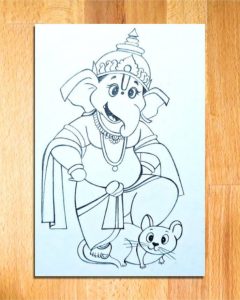Creating an easy Ganesh drawing can be a delightful and spiritually uplifting artistic endeavor. Begin by sketching the basic shapes, such as a large circle for Lord Ganesha’s body and a smaller circle for his head. Focus on capturing the distinctive features, including his elephant head, large ears,
A Guide to Easy Ganesh Drawing
Ganesha, the beloved elephant-headed Hindu deity, represents wisdom, prosperity, and auspicious beginnings. Drawing him doesn’t have to be complicated! Here’s a simple guide to get you started:
Materials:
- Pencil (HB or 2B)
- Eraser
- Sharpener
- Drawing paper
- Colored pencils, crayons, or markers (optional)
Steps:
Start with basic shapes:
- Draw a large circle for the head.
- Draw a smaller circle below the head for the chest, slightly overlapping the head.
- Draw another, even smaller circle below the chest for the belly.
- Connect the head and chest with two curved lines for the neck.
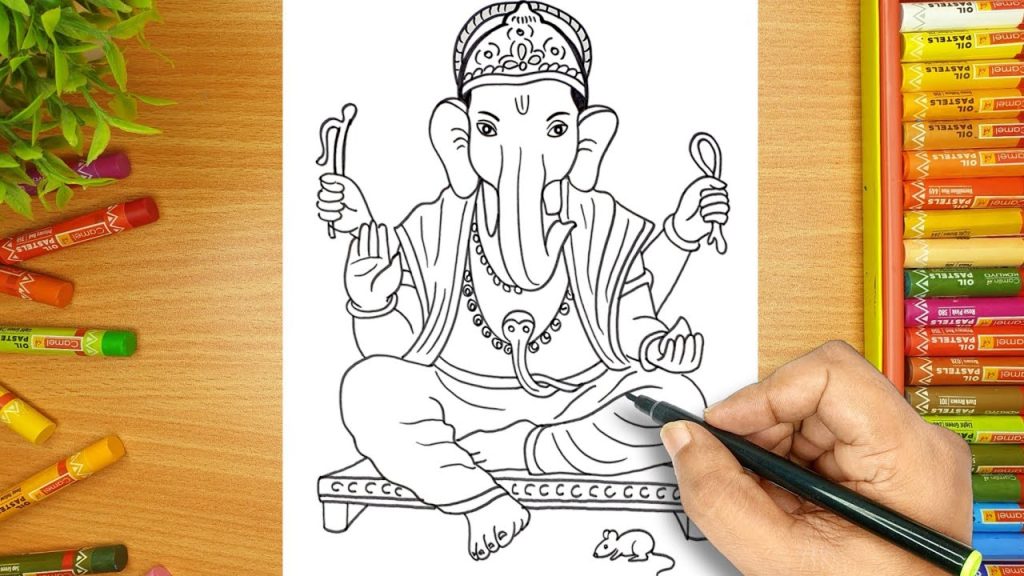
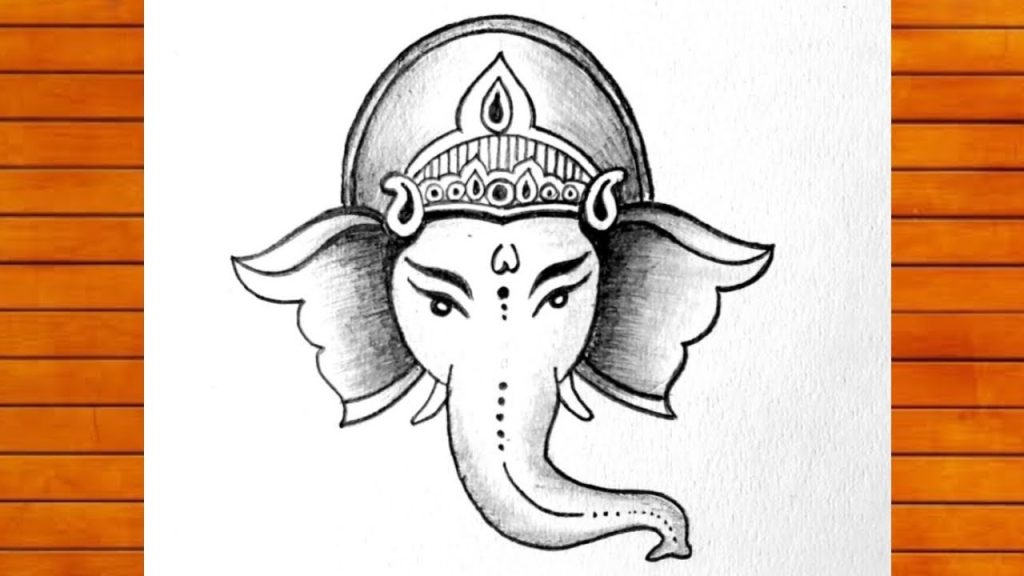
Mastering the Basics of Easy Ganesh Drawing
While the previous guide offered a simple introduction to drawing Ganesha, mastering the basics requires delving deeper into his unique features and symbolism. Here’s how to elevate your Ganesha drawings to capture his essence:
Anatomy and Proportions:
- Elephant Head: Study elephant anatomy, focusing on the shape of the skull, the placement of the eyes, and the trunk’s flexibility. Pay attention to how the trunk curves and folds, adding realistic wrinkles and textures.
- Human-like Body: While Ganesha has an elephant head, his body retains human-like proportions. Ensure proper proportions between the head, torso, and limbs, referencing anatomical drawings or statues.
- Dynamic Poses: Don’t limit yourself to static poses. Experiment with Ganesha sitting gracefully, dancing joyously, or blessing devotees with his raised hand. Use reference photos or videos of elephants and dancers for inspiration.
Details and Symbolism:
- Eyes and Expression: Capture the wisdom and kindness in Ganesha’s eyes. Use shading and highlights to convey his emotions, whether it’s a gentle smile, playful mischief, or serene contemplation.
- Trunk and Tusks: The trunk is Ganesha’s symbol of wisdom and problem-solving. Draw it with varying thickness and curvature, depending on the action it performs. Remember the single tusk on the right side, symbolizing strength and determination.
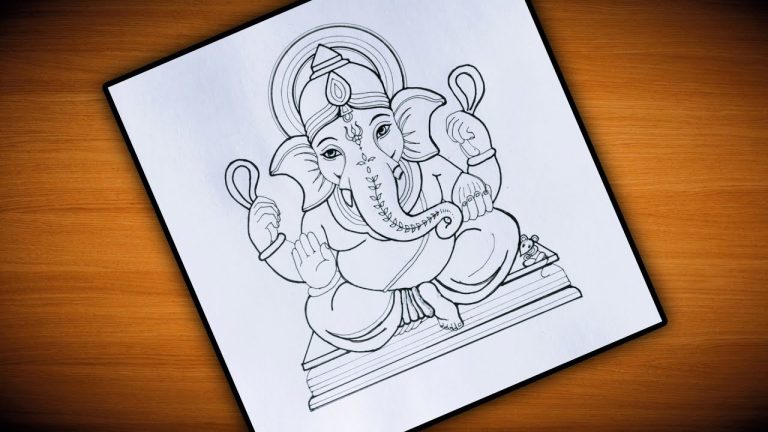
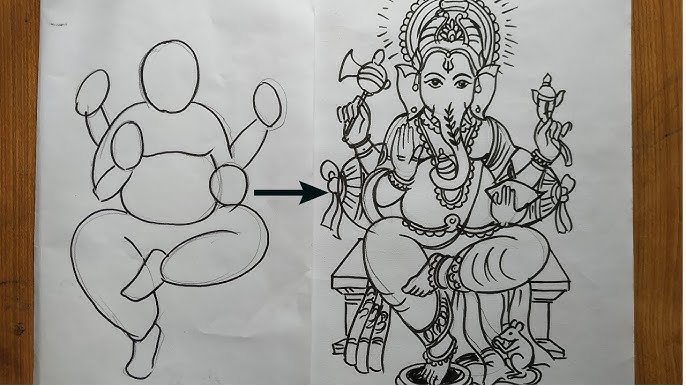
Easy Ganesh Drawing for Beginners
Ganesha, the elephant-headed Hindu god, is known for his wisdom, prosperity, and ability to remove obstacles. Drawing him doesn’t have to be intimidating, even for beginners! Here’s a simple guide to bring him to life with joy:
Materials:
- Pencil (HB or 2B)
- Eraser
- Sharpener
- Drawing paper
- Colored pencils, crayons, or markers (optional)
Steps:
Start with basic shapes:
- Draw a large circle for the head.
- Draw a smaller circle below the head, slightly overlapping, for the chest.
- Draw another even smaller circle below the chest for the belly.
- Connect the head and chest with two curved lines for the neck.
- Connect the chest and belly with another curved line for the torso.
- Draw four short lines for the legs.
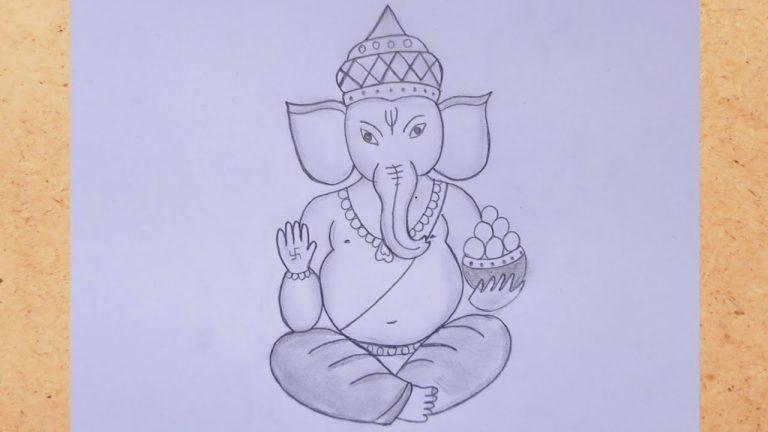
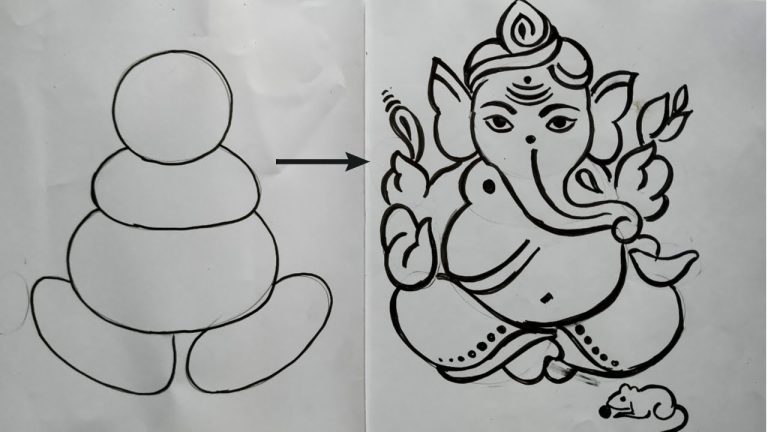
A Step-by-Step Save Easy Ganesh Drawing
Here’s a guide to draw an adorable Ganesh saving a tree from pollution, raising awareness for environmental protection:
Materials:
- Pencil (HB, 2B, and 4B)
- Eraser
- Sharpener
- Drawing paper
- Colored pencils, markers, or paints (optional)
Steps:
Heroic Pose:
- Draw a large oval tilted upwards for the body, representing Ganesh leaping to protect the tree.
- Sketch two smaller ovals, one above the body for the head and one below for the pelvis, both tilted slightly in the opposite direction for counterbalance.
- Connect the head and body with two curved lines for the neck.
- Draw four triangles for the legs, two bent upwards for powerful thrust and two extended downwards for balance.
- Sketch a long, flowing tail flowing dynamically behind the body.
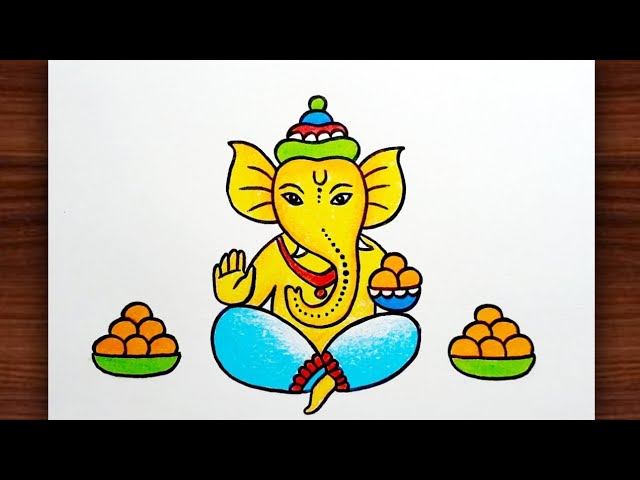
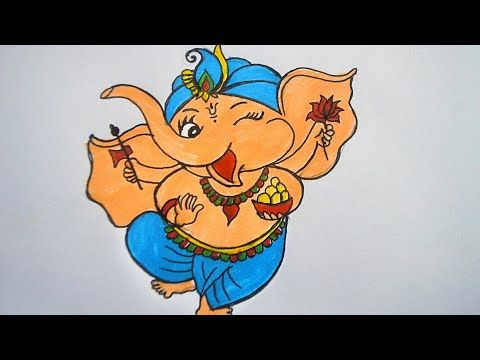
Easy Ganesh Drawing Techniques
Drawing Ganesha with a focus on simplicity and charm doesn’t mean compromising on his unique features and symbolism. Here are some techniques to elevate your easy Ganesh drawings:
Anatomy and Proportions:
- Simplified Shapes: While elephant anatomy can be complex, break it down into basic shapes like circles and ovals for the head, chest, and belly. Use curved lines for the trunk and limbs, keeping the overall form rounded and inviting.
- Playful Poses: Don’t limit yourself to traditional seated postures. Experiment with playful poses like Ganesha standing, dancing, or holding a sweet in his trunk. Reference photos of children or animals in action for inspiration.
- Exaggerated Features: Enhance the cuteness factor by slightly exaggerating specific features like the eyes, ears, and trunk. Make the eyes large and expressive, the ears floppy and adorable, and the trunk curved with a playful curl at the end.
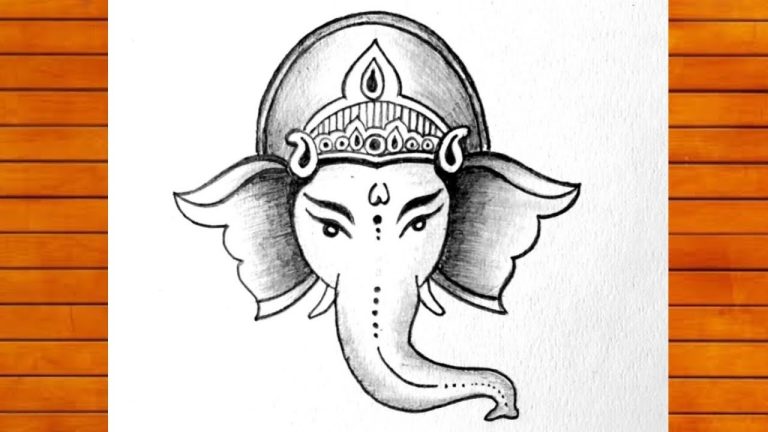
Frequently Asked Questions (FAQs)
Start with basic shapes, focus on the elephant head, trunk, and four arms, and keep details minimal.
Color is optional; traditional hues like red, yellow, or green work well, but black and white can be effective too.
Focus on clean lines, well-proportioned features, and simple shading for dimension.
